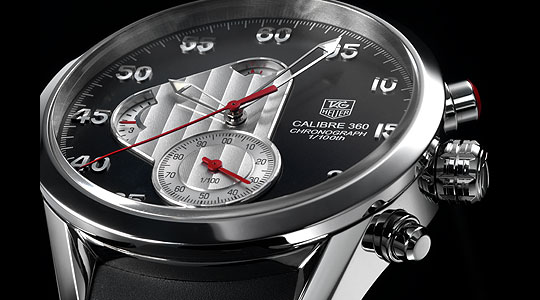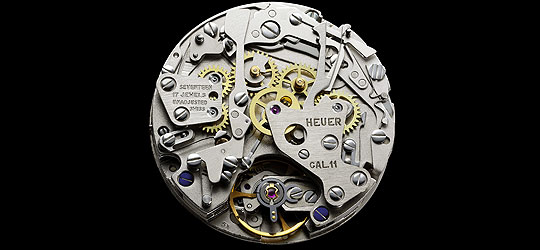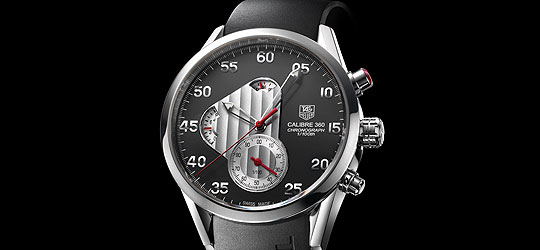
Presented at Baselworld 2005, the most accurate mechanical timepiece ever crafted features an exceptionally high frequency balance wheel, which oscillates at 360,000 beats per hour - 10 times faster than any other chronograph, a rate that until now was considered impossible.

Jean-Christophe Babin, TAG Heuer CEO, explains: "To give you some perspective, before the Calibre 360, the most accurate mechanical Chronograph was the TAG Heuer Calibre 36, beating at 36.000 alternances per hour. In other words we have pioneered a totally new and ultimate accuracy area for a mechanical timepiece. 10 times more accurate than ever before. In terms of quantum leap, just imagine a Formula 1 engine pushed overnight from 18.000 rpm to 180.000 rpm...

"TAG Heuer has ever stood for the ultimate precision and accuracy, breaking 1st the 1/100th of a second in Timekeeping in 1916 and the the 1/1000th in 1966. For wrist chronographs we were the first to break the 1/100th of a second in quartz movements in the early 80's and then the mythical 1/1000th of a second in 2003 with the Microtimer, subsequently awarded the "Grand Prix d'Horlogerie de Genève" 2003. In parallel in 2002 we introduced the calibre 36 mechanical chronograph at the 1/10th of a second when most Competitors are proposing only the 1/8th of a second which is a division of time not really practical nor consistent with any activity. At the same time we decided to undertake the "ultimate mechanical challenge" i.e. the 1/100th of a second. So in total it took us 3 years."

As in a hi-tech racing engine its functions are displayed through the wrought Côtes-de-Genève “chronograph engine”, which contrasts with the flat-black dial. At 6 o'clock, an oversized circular fine-brushed counter keeps track of the 1/100ths-of-a-second red hand, while at 9 o'clock, a red minute needle directly integrated into the “chronograph engine” displays the elapsed time on a 9 minutes scale disk, particularly suitable for the car-race timekeeping. At 12 o'clock, the wearer can see the power-reserve indicator of 100 minutes, displayed in the same way as the fuel indicator of car’s dashboards, through the “chronograph engine's” angled polished opening.

The case has been crafted from titanium Grade 5, an exclusive TAG Heuer material developed with McLaren in 1997 for the Kirium series, and combining utmost resistance with utmost lightness as well as sparkling polish effect. It’s a pure TAG Heuer case with oversized crown and asymmetrical pushbuttons, the larger of which, at two o’clock and capped bright red, controls the stopwatch. Once pressed, the chronograph mechanism springs into action, simultaneously activating the chronograph second hand in the centre of the dial and the 100ths-of-a-second hand located in a counter at six o’clock. Developed with Juan Pablo Montoya, the bracelet is, naturally, in stylish black rubber with folding buckle.
For further information please visit www.tagheuer.com.
Text: Classic Driver
Photos: TAG Heuer
ClassicInside - The Classic Driver Newsletter
Free Subscription!





